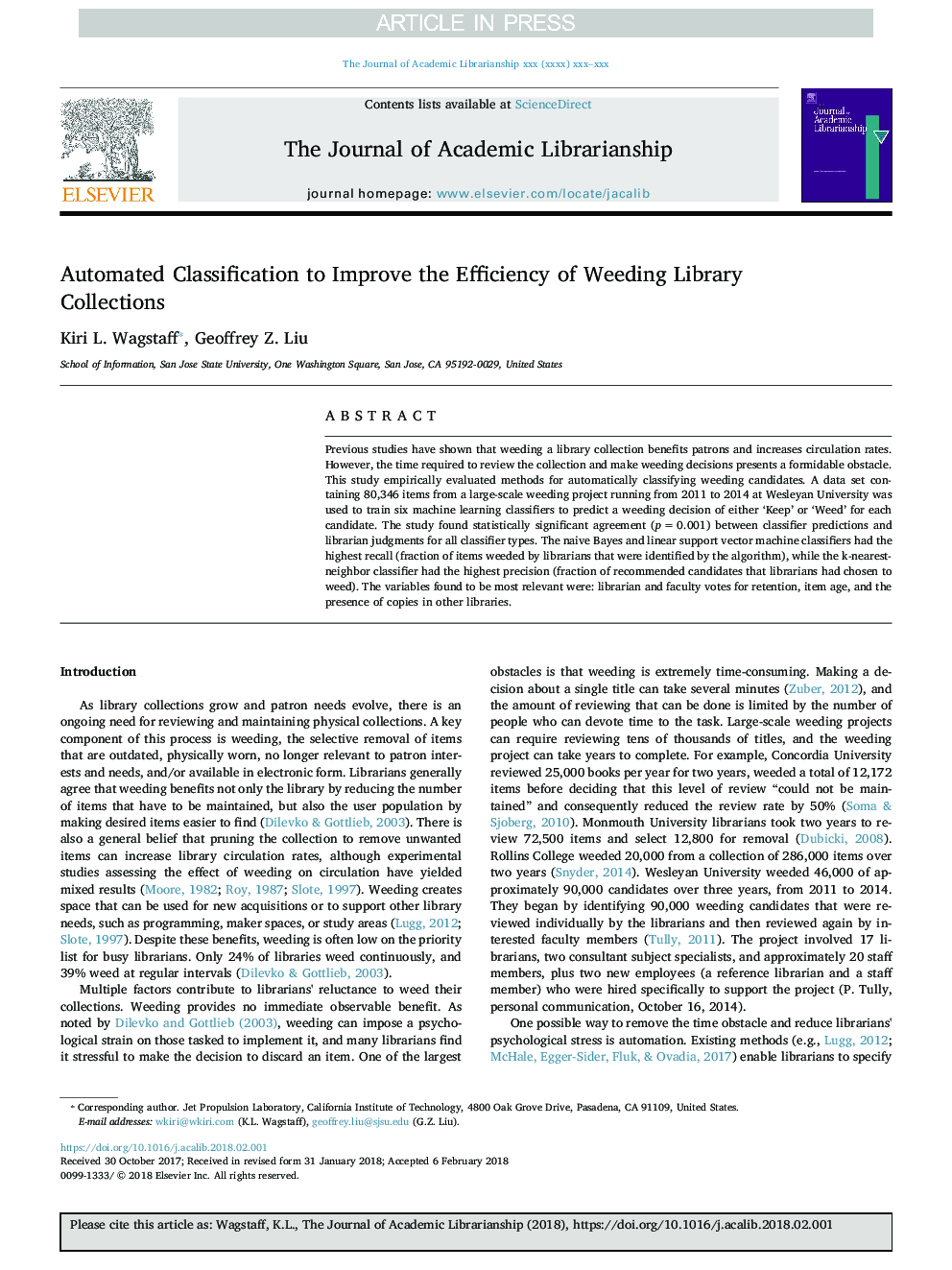| Article ID | Journal | Published Year | Pages | File Type |
|---|---|---|---|---|
| 6842103 | The Journal of Academic Librarianship | 2018 | 10 Pages |
Abstract
Previous studies have shown that weeding a library collection benefits patrons and increases circulation rates. However, the time required to review the collection and make weeding decisions presents a formidable obstacle. This study empirically evaluated methods for automatically classifying weeding candidates. A data set containing 80,346 items from a large-scale weeding project running from 2011 to 2014 at Wesleyan University was used to train six machine learning classifiers to predict a weeding decision of either 'Keep' or 'Weed' for each candidate. The study found statistically significant agreement (pâ¯=â¯0.001) between classifier predictions and librarian judgments for all classifier types. The naive Bayes and linear support vector machine classifiers had the highest recall (fraction of items weeded by librarians that were identified by the algorithm), while the k-nearest-neighbor classifier had the highest precision (fraction of recommended candidates that librarians had chosen to weed). The variables found to be most relevant were: librarian and faculty votes for retention, item age, and the presence of copies in other libraries.
Related Topics
Social Sciences and Humanities
Social Sciences
Education
Authors
Kiri L. Wagstaff, Geoffrey Z. Liu,
